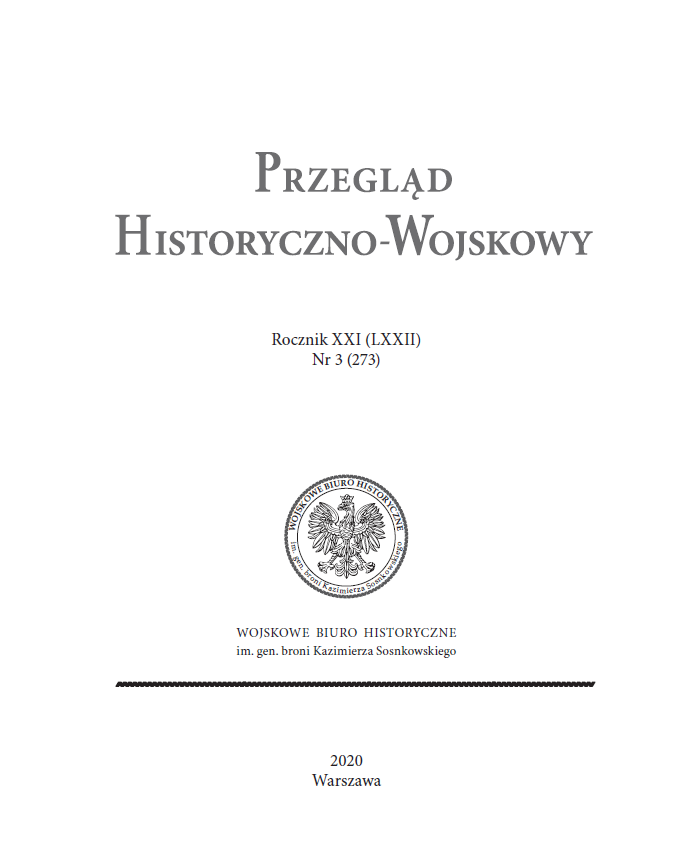Skład, rozmieszczenie, plany operacyjne i rola Frontu Mazowieckiego na froncie przeciwniemieckim w 1919 roku
Composition, Deployment, Operational Plans and Role of the Mazovian Front on the Front against Germany in 1919
Author(s): Maciej PieńkowskiSubject(s): Politics / Political Sciences, History, Military history, Recent History (1900 till today), Pre-WW I & WW I (1900 -1919)
Published by: Wojskowe Biuro Historyczne im. gen. broni Kazimierza Sosnkowskiego
Keywords: Mazovian Front;Germany;division;regiment;High Command of the Polish Army
Summary/Abstract: The article discusses the functioning of the Mazovian Front within the anti-German front in 1919. The Mazovian Front played an important role in shielding Warsaw from an expected German attack from the Toruń–Mława line, which posed a threat for Greater Poland to be outflanked and Warsaw to be captured. Therefore, the High Command of the Polish Army directed initially four infantry divisions to northern Mazovia, and the main burden of defending the section stretching from the Augustów Canal to Aleksandrów Kujawski was taken over by Haller divisions and the 8th Infantry Division. In the High Command of the Polish Army it was expected that the units of the Mazovian Front would give the attacking Germans a battle on the Narew and Biebrza lines, while concentrating their power and resources in the Modlin–Pułtusk–Zegrze triangle. Due to the absence of natural barriers on the right bank of the Vistula River, the Polish command did not plan much resistance above Płock and Włocławek. As part of active defense, however, it took into account counterstrikes on the enemy’s wings in the Grudziądz–Brodnica or Działdowo direction. These plans did not correspond to the limited capabilities of the forces opposing Germany, especially the smallness of them resulting from the fights in the east. Despite signing the Treaty of Versailles, German provocations aimed at dragging Poland into a state of open conflict continued – there were frequent incidents of trespassing the border, occupying Polish areas and locations, fire exchanges and mutual arrests on charges of espionage.
Journal: Przegląd Historyczno-Wojskowy
- Issue Year: XXI/2020
- Issue No: 3
- Page Range: 163-206
- Page Count: 44
- Language: Polish

